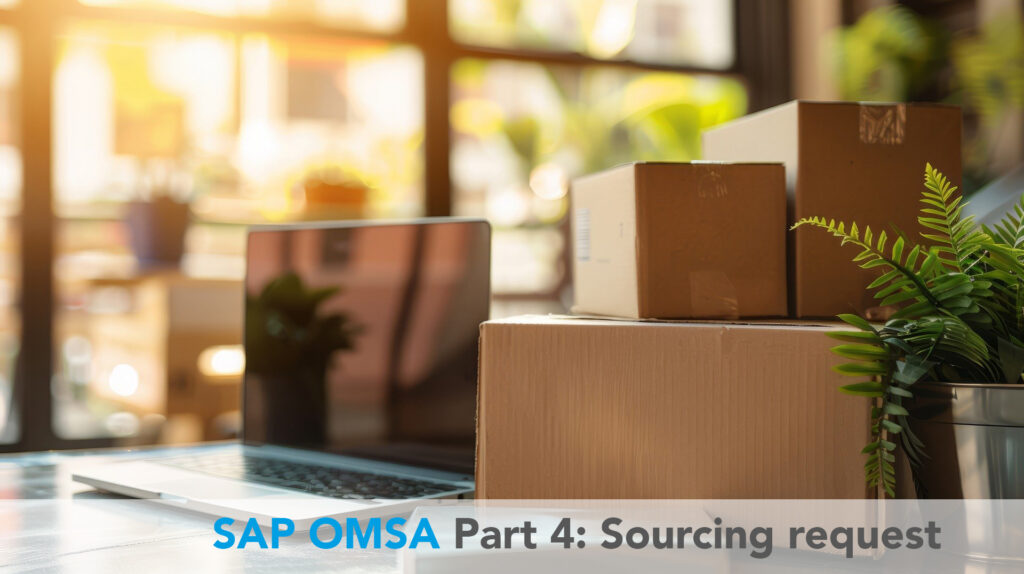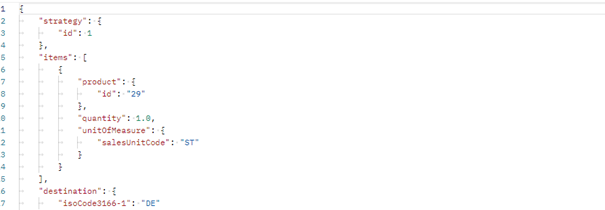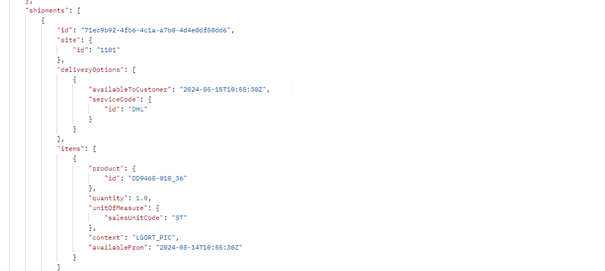
André Dotzler

Henning Sanders
Introduction
After discussing sourcing strategies and settings in the third part of our blog series, in this article, we’ll explore how to make a sourcing request to SAP OMSA and what information SAP OMSA returns to the requesting system.
To simulate the sourcing requests, we used Postman, an application that allows us to send requests to the SAP OMSA system. You’ll see screenshots from Postman throughout this article, helping us illustrate this process simply and effectively.
Sourcing request
SAP provides a comprehensive description of the sourcing payload in their documentation. The payload is flexible and includes both mandatory and optional fields to further customize the sourcing request. The request is made via API directly to SAP OMSA and does not pass through Cloud Integration or Data Ingestion.
Mandatory fields
- Strategy ID: Controls the sourcing and which plants need to be considered.
- Product ID: Includes the requested quantity and unit of measure.
- Destination: Helps SAP OMSA determine if a delivery is possible and, if so, which plants and transportation services are available.
Optional fields
In addition to the mandatory fields mentioned above, SAP offers other optional fields. The most important fields are:
- Timeout (in seconds): Describes how long the reservation should be maintained. The default value is 30 minutes before the reservation is deleted.
- Additional address information (for the recipient): The location of the recipient can be further specified beyond the destination country. Special delivery times for regions, such as islands, can be maintained.
- Shipping information: Specifies that sourcing should only be done for a certain carrier (e.g., a customer’s request).
- Click & Collect: Allows for a request to be made for a specific site, such as a store, for Click & Collect processes.
- Stock context: Used to indicate, for example, specific storage locations or stock qualifications. In the sourcing request, it can be specified that sourcing should only be done from these locations.
Timing of the sourcing request
The timing of the sourcing request depends heavily on the requesting system or process. For manually created orders in S4, sourcing can only occur after the order is created. For marketplace orders (e.g., Amazon Marketplace), sourcing is possible only after the order is received in OMF or S/4HANA because OMSA integration with certain marketplaces is not always possible due to marketplace provider restrictions.
It gets interesting with web shop orders. Here, the question arises as to when the goods should be blocked for the customer (which is essentially what the sourcing request does, as it triggers a reservation). Should the goods be reserved when the customer adds them to the online shopping cart, or only when they complete the checkout process?
Each approach has its pros and cons, which need to be evaluated for each business.
Sourcing response
SAP OMSA responds to the sourcing request within a fraction of a second. There are various response options for each requested material:
- Material available
- Only partial quantities available
- Material not available
Additionally, SAP OMSA provides information that can be displayed in the shop. This includes, for example, the selected carrier or the estimated delivery date (availability + delivery time).
Sourcing response
The sourcing request is a highly adaptable tool that can be tailored to fit various environments. Depending on the system sending it to SAP OMSA, the request can be configured in various ways. SAP has also announced future enhancements to the sourcing request, aiming to offer even greater flexibility.
Interested?
Interested in learning more about SAP OMSA? Get in touch with us to find out more.
SAP OMSA (1) – the new innovative cloud sourcing tool from SAP
SAP OMSA is a term that you may have come across in presentations, discussions, or forum threads. But what does OMSA actually stand for, and what benefits does implementing this system bring?
SAP OMSA (2) – Integrating S/4HANA backend with SAP OMSA
Integrating the S/4HANA system with SAP OMSA is crucial for seamless data exchange. But how does data ingestion work, and what are the key considerations?
SAP OMSA (3) – Sourcing strategy
In the SAP OMSA system, sourcing strategies significantly determine the outcome of a sourcing request. In this article, we take a closer look at sourcing strategy settings and shed light on how they can be used and adapted.
SAP OMSA (5) – Functionalities beyond sourcing
In addition to the sourcing request, the SAP OMSA system offers additional functions. In this article, we highlight the key APIs that are supported and shed light on how they can be used in a real-life retail environment.
SAP OMSA (6) – the building blocks for effective sourcing requests
In this article, we delve into the functionalities and settings of plant master data and transportation aspects. These are pivotal components that have a significant impact on sourcing outcomes in the SAP OMSA system.




